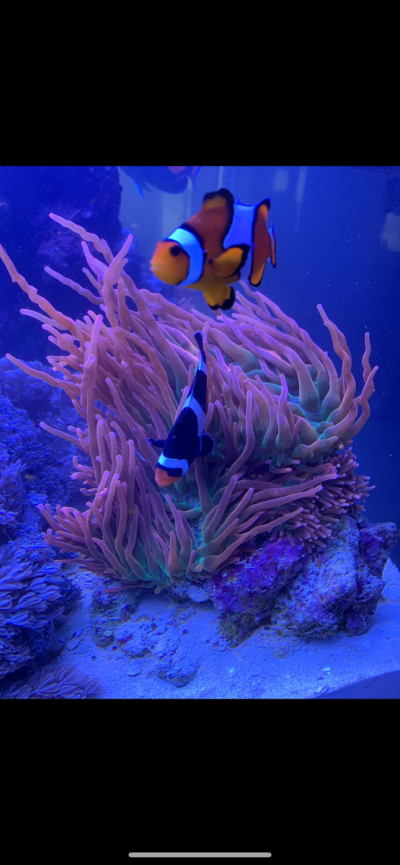Obviously, there are two ways an anemone can acquire nutrients: photosynthesis or catching prey. Longer tentacles seem more adaptive for catching prey, and inflated (bulbous) tentacles seem adaptive for photosynthesis (by increasing each tentacle's surface area and "stabilizing" the tentacles for more uninterrupted light exposure). An anemone could change moment to moment which form it adopts, but I would expect it to generally favor the method in which it would be more successful in acquiring nutrients in its environment.
Thus, I would expect an anemone conditioned to favor catching prey over photosynthesizing would display longer tentacles. In contrast, if an anemone receives enough light such that photosynthesizing is a reasonable energy source to prioritize, and it does not as readily obtain prey items, it would develop more bulbous tips to increase its ability to collect light.
So, if you think of a BTA as adopting one of two behavioral "modes" for nutrient acquisition, a lot of the associations of bulbous tips with particular environmental characteristics start to make sense.
Let's discuss! How often do you feed your anemone and what amount of light is it receiving? My prediction is that a regularly fed anemone (2x per week) would be less likely to have bulbous tips even under high light conditions.
Thus, I would expect an anemone conditioned to favor catching prey over photosynthesizing would display longer tentacles. In contrast, if an anemone receives enough light such that photosynthesizing is a reasonable energy source to prioritize, and it does not as readily obtain prey items, it would develop more bulbous tips to increase its ability to collect light.
So, if you think of a BTA as adopting one of two behavioral "modes" for nutrient acquisition, a lot of the associations of bulbous tips with particular environmental characteristics start to make sense.
Let's discuss! How often do you feed your anemone and what amount of light is it receiving? My prediction is that a regularly fed anemone (2x per week) would be less likely to have bulbous tips even under high light conditions.



















